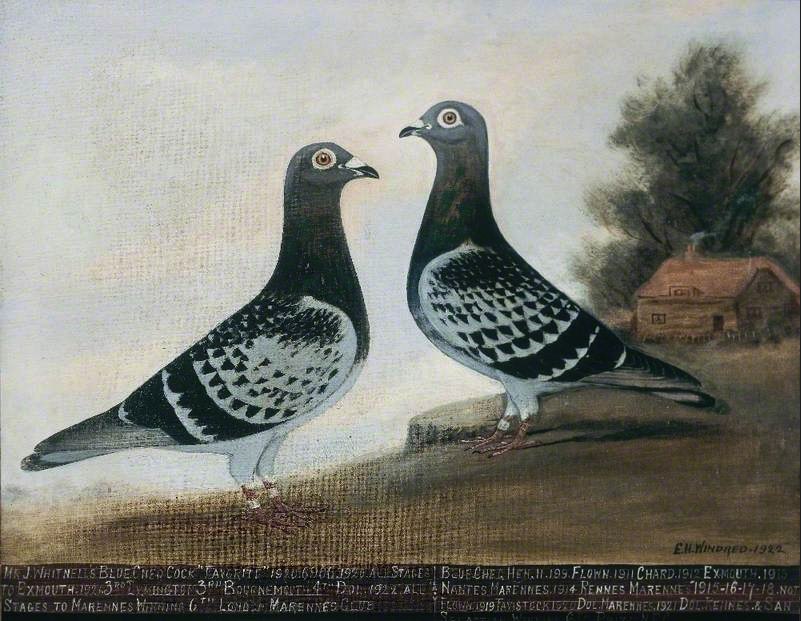Explore
Pastimes

Racing Pigeons
E H Windred
1922
Oil on canvas
53 x 63.4 cm
Pigeon racing can be traced back to the third century AD, but only really caught on in Britain in the later 19th century. The first formal pigeon race in this country was staged in 1881, and by 1886 even Queen Victoria was sending a royal pigeon in at the behest of her second cousin, the notorious Belgian monarch King Leopold II. (Belgium was and is the epicentre of pigeon-racing in Europe, and was where the modern sport first took off in the 1850s.)
The racing or homing pigeon is a variety of domestic pigeon (Columba livia domestica) selectively bred for its ability to find its way home over extremely long distances. By the early 20th century Belgian fanciers were breeding exceptionally fast varieties known as voyageurs. From the Franco-Prussian War of 1870 to the Second World War, racing pigeons were used extensively to carry messages across the lines. In 1918 one such messenger pigeon – Cher Ami, donated by the pigeon fanciers of Britain for use by the US Army Signal Corps in France – was awarded the French Croix de guerre for her heroic service in delivering twelve important messages despite having been badly injured.
Edward Henry Windred (1875-1953) supported his family by working as a barber in South London but also had a thriving sideline business as a painter specializing in portraits of racing pigeons. In pigeon racing, birds which have been specially bred and trained are released at a point very distant from their homes (often hundreds of miles away) and timed on their journey home. According to the records at the bottom of the picture, these two birds were taken to France or Spain to be released on a number of occasions, and one of them raced over a period of at least ten years.
Owners of winning birds were sometimes awarded portraits of their champions as prizes; other pigeon fanciers undoubtedly commissioned portraits of their favourites privately. Windred seems to have had only a little training as an artist, but he took care to produce good likenesses of his subjects. He would save samples of their feathers, or would have their owners bring them to his barber shop when it was closed, sometimes even keeping the birds for longer periods in his own pigeon loft so that he could paint them from life.
Racing Pigeons 1922 © Compton Verney
Reference CVCSC 0062.F




